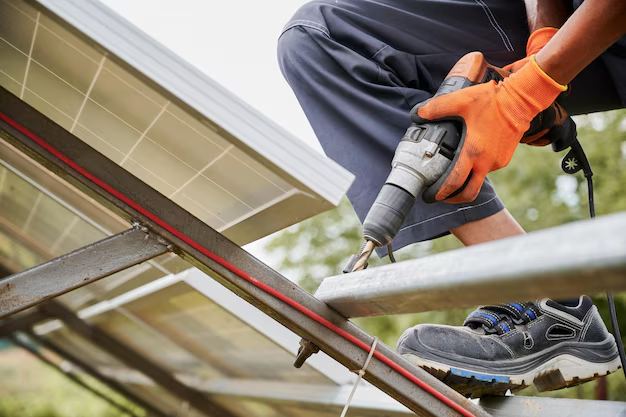Upgrade Your Roof: Installing a Metal Roof Over Shingles Made Easy
When it comes to improving your home, installing a metal roof over shingles is a smart move that combines durability with style. Not only does this method save time and labor costs by avoiding the need to remove existing shingles, but it also offers enhanced protection and energy efficiency. Let's explore how you can achieve a sleek metal roof installation without unnecessary fuss.
Why Choose Metal Over Shingles?
Durability and Longevity: Metal roofs last significantly longer than traditional shingle roofs. While shingles might last 15-20 years, metal roofing can endure for 50 years or more.
Energy Efficiency: Metal reflects solar radiant heat, reducing cooling costs by up to 25%. This makes it an eco-friendly choice that contributes to lower energy bills.
Low Maintenance: Once installed, metal roofs require minimal upkeep. They are resistant to cracking, shrinking, and eroding.
Step-by-Step Guide to Installing a Metal Roof Over Shingles
Check Regulations: Before starting, check local building codes and HOA guidelines. Some regions have specific rules about additional roofing layers.
Inspect the Structure: Ensure that your roof's structure can bear the added weight of a metal roof. If the shingles are in poor condition or the roof deck is damaged, repairs might be needed.
Install Underlayment: Placing a layer of underlayment over shingles is crucial. This acts as a barrier against moisture, enhancing insulation and reducing noise. Use a synthetic underlayment for maximum protection.
Lay Furring Strips: To prevent metal panels from resting directly on shingles, install furring strips. This creates a gap for ventilation, preventing condensation and improving airflow.
Start with the Metal Panels: Begin installation from the eaves, working your way up to the ridge. Align the panels carefully and secure them with metal roofing screws. Ensure overlap to prevent leaks.
Flash and Seal: Use flashing around chimneys, skylights, and other penetrations to prevent water ingress. Seal all joints and screws with a high-quality sealant.
Inspect and Maintain: Once installed, conduct a thorough inspection. Address any missed areas or loose screws immediately. Schedule regular checks to maintain the roof's integrity.
Transforming Your Financial Outlook with Roofing
Investing in a metal roof can be substantial, but it pays off through longevity and savings on energy bills. To ease the financial burden, explore options like:
☑️ Financial Assistance and Tax Credits
- Federal and State Tax Credits: You may qualify for energy-efficiency tax credits for installing a metal roof.
- Energy Efficiency Rebates: Some utility companies offer rebates on energy-efficient home upgrades.
☑️ Financing and Credit Solutions
- Home Improvement Loans: Many financial institutions provide loans specifically for roofing projects.
- Credit Card Solutions: Some credit cards offer low-interest rates for home renovations.
☑️ Educational Resources
- Workshops and Courses: Several organizations offer workshops on DIY home improvement.
- Online Tutorials: Utilize platforms providing free videos and tutorials on roofing projects.
Making informed decisions about your home not only secures your investment but also paves the way for sustainable living. Whether you opt for financial assistance or education to bolster your roofing project, the results—a sturdy, energy-efficient home—are worth the effort.
